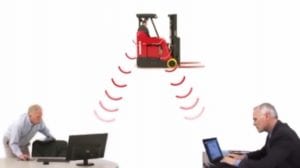The 2016 business world is ever-changing, which can cause some serious challenges for executives everywhere. Forecasts can’t be made with any real certainty due to the explosive technology boom, changing consumer demands, and workforce changes. Imagine trying to get a solid six-month forecast, let alone making predictions about 2020.
While it’s near impossible to predict the future, those who don’t at least plan for it will be left in the dust by those who did. Although most company leaders must concern themselves with quarterly results, revenue projections, and marketplace obstacles, predicting the future is a difficult task, but it is one you can’t afford to overlook.
So, how should you be preparing? Some of the trends we are seeing today include;
- The Growth of E-commerce – A Forbes report shows the breakdown of e-commerce sales in 2014: E-commerce made up 8.2% of retail sales in Asia-Pacific; 6.7% in Western Europe; and 6.3% in North America. Forecasts suggest that by 2018, these figures will be 18%, 10%, and 9%, respectively. Retailers are investing in a multi-channel sales approach in hopes of providing customers with a seamless shopping experience. They want to increase market size by providing this experience on desktop and mobile devices, at brick-and-mortar stores, or on the telephone.
- Robots and Automation – Robots still play a big role in manufacturing, but they are also becoming commonplace in the materials handling and logistics industries. Autonomous equipment with centralized control could one day encompass all warehouse equipment. It can be used with over-the-road trucking, robotic loading and unloading of trailers, and, as Amazon recently announced, drones for item picking. Labor will soon become scarce and expensive and automation will be the prudent alternative.
Raymond now offers an automatic guided vehicle to autonomously transport pallets and automated lift trucks won’t be that far behind.
- Sensors and The Internet of Things – The Internet of Things has allowed for great advances in technology, including Radio Frequency Identification (RFID) sensors. RFID sensors enable objects to communicate with electronic management systems (EMS). This communication makes tracking and information collection simple. Paired with automation, RFID sensors aid in quick decisions about goods transport without human intervention. Internet of Things usage is spreading across industries, helping to track and manage physical assets, improve customer experience and enhance supply chain visibility.
 Big Data and Predictive Analytics – There’s no shortage of data and data management systems out there, which makes process improvements (logistics, warehouse operations) much simpler. How? It allows companies to prepare for just about everything by capturing real-time data that enable proactive decisions that affect the bottom line. There must be a commitment to not only collecting and analyzing data, but also to act on it. Continually encouraging data-driven enhancements and changes can spark conversations that lead to real, valuable, and significant improvements. One of the ways many companies are starting to collect and record data in warehouse environments is through telematics.
Big Data and Predictive Analytics – There’s no shortage of data and data management systems out there, which makes process improvements (logistics, warehouse operations) much simpler. How? It allows companies to prepare for just about everything by capturing real-time data that enable proactive decisions that affect the bottom line. There must be a commitment to not only collecting and analyzing data, but also to act on it. Continually encouraging data-driven enhancements and changes can spark conversations that lead to real, valuable, and significant improvements. One of the ways many companies are starting to collect and record data in warehouse environments is through telematics.- Sustainability – Through the development of more sustainable business practices, operational efficiencies will increase. With better use and conservation of resources, operations will be streamlined and costs will decrease. This will allow for a more agile team, which allows companies to be more dynamic and keep up with their customers’ ever-changing needs.
The Raymond Corporation practices what they preach. To help warehouses and distribution centers achieve higher performance and more sustainable operations, Raymond delivers Eco-Performance. Eco-Performance is Raymond’s approach to designing and engineering lift trucks that maximize economic and ecological benefits.
What do you foresee as your biggest challenge and how are you preparing to deal with it?




Leave a Reply
You must be logged in to post a comment.